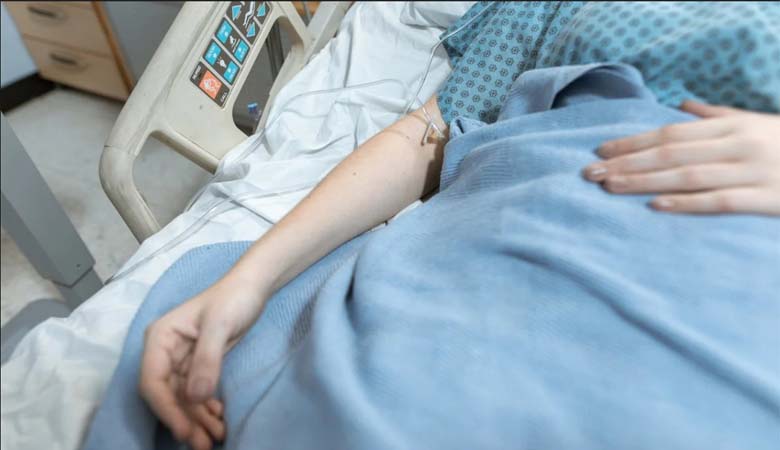
Endoscopy is a crucial diagnostic and therapeutic technique for internal organ inspection and treatment. Therefore, it is critical to meticulously prioritize the hygiene of endoscopes to maintain their performance, extend their lifespan, and reduce the danger of cross-contamination.
While proper cleaning techniques are unquestionably important, it is also critical to emphasize the need for complete endoscope drying. An analysis published in the American Journal of Gastroenterology indicated that roughly 20% of reprocessed endoscopes were contaminated with germs, based on investigations done between 2010 and 2020. Inadequate drying can lead to patient infections, which must be avoided at all costs.
This article delves into the critical function of endoscope drying, highlighting its significance, investigating potential repercussions of insufficient drying, and offering thorough guidance for appropriate drying practices.
Effective Endoscope Drying Guidelines
- Follow Manufacturer Recommendations
Always adhere to the manufacturer’s recommendations for the precise drying processes for your endoscope model. Drying time, airflow rates, and the usage of drying accessories or equipment are frequently recommended by manufacturers. Following these directions assures that you are employing the most suitable endoscopic procedures.
- Flushing and Purging Thoroughly
Before beginning the drying process, check that all channels and lumens have been fully cleaned and purged with filtered or medical-grade compressed air. This procedure eliminates any remaining debris or disinfectant solutions from the inside of the endoscope.
- Drying Cabinets
Drying cabinets provide a regulated and sterile environment for storing endoscopes. They are often composed of compartments or slots where endoscopes can be hung or kept dry. It features adjustable temperature, filtered airflow, and humidity controls to enhance drying while keeping the atmosphere sanitary. Some cabinets, such as the Ventaire scope drying cabinet, contain secure locking mechanisms, storage, and traceability monitoring systems.
In 2019, the global market for endoscope drying cabinets was valued at around USD 190.20 million. It is expected to reach USD 349.45 million by 2027, exhibiting a strong compound annual growth rate (CAGR) of 8% from 2021 to 2027. This expansion can be ascribed to a growing awareness of the significance of good endoscope drying and storage practices in healthcare institutions.
- Gravity Drying
Gravity drying entails hanging the endoscope vertically with the distal end pointed downwards, enabling gravity to help in moisture drainage. To provide ventilation, open all ducts and valves. Gravity drying is a simple and efficient technique often used in endoscopic units.
- Using Absorbent Materials
Absorbent materials, for instance, lint-free towels or disposable sponges, can be used to dry exterior surfaces and remove residual moisture. Verifying that the materials used are compatible with the endoscope and do not leave lint or fibers behind is critical.
- Visual Examination
It’s crucial to visually examine the endoscopes after drying. Here’s how to do that:
- Once the endoscope has dried, check for any evidence of persistent moisture or damage.
- Take special note of the distal end, channels, and connections.
- If moisture is found, repeat the drying procedure or seek advice from the manufacturer or biomedical engineering department.
What is the Significance of Endoscope Drying?
Endoscope reprocessing is a thorough procedure with many crucial phases, including cleaning and high-level disinfection. However, endoscope drying appears as a vital phase of utmost importance within this entire cycle. Here are a few key points backing its significance:
- Infection Prevention: Endoscope drying is critical to inhibiting the growth and reproduction of germs such as bacteria, viruses, and fungi. Moisture inside the endoscope channels can foster microbial development, potentially leading to cross-contamination and patient illnesses. Thorough drying reduces this danger, which contributes to improved infection control practices.
- Instrument Integrity Preservation: Endoscopes are fragile and costly equipment requiring careful handling and maintenance. Moisture buildup can lead to rusting, corrosion, and damage to internal components, including optics and channels, reducing efficiency and higher maintenance or replacement costs. Effective drying techniques assist endoscopes in maintaining their integrity and longevity, sustaining excellent performance over time.
- Less chance of Biofilm development: Biofilms are complex microbial colonies that may grow within endoscope channels when moisture is present. Biofilms are infamous for their disinfection resistance and can serve as a cause of recurring infections.
- Compliance with Standards and Guidelines: Regulatory authorities and professional organizations, such as the FDA, CDC, and other medical associations, publish endoscope reprocessing standards and recommendations. Many of these guidelines stress the need for thorough drying as an essential phase in reprocessing. Compliance, patient safety, and quality assurance are all ensured by following these criteria.
Implications of Contaminated Endoscopes Due to Inadequate Drying
Antibiotic-resistant diseases cost the United States healthcare system approximately 4.6 billion dollars each year, according to the Centers for Disease Control and Prevention (CDC). A paper published in Endoscopy International Open highlights endoscopes as ranking first among medical equipment related to healthcare-associated infections.
Flexible endoscopes are difficult to reprocess owing to their tiny channels, which are challenging to fully clean. The reprocessing instructions differ depending on the endoscope model and seller, adding to the complexity. Because there are no standardized reprocessing methods, it is up to individual healthcare institutions or organizations to design endoscope reprocessing programs. This lack of standardization may result in subpar reprocessing systems, raising the risk of contamination and healthcare-associated illnesses.
Revised AAMI Guidelines
The Association for the Advancement of Medical Instrumentation (AAMI) has announced new guidelines for endoscope reprocessing in response to the issue of antibiotic-resistant infections connected with endoscopes. These new recommendations cover many topics, including the critical drying and storage phase.
The amended recommendations make improvements to cleaning processes while emphasizing the need for enhanced training requirements, including certificates. They also advocate for sterilization technologies and improved water and air quality regulations in the reprocessing environment.
The guidelines emphasize the need for comprehensive drying operations, recognizing the function of drying in minimizing the danger of biofilm buildup. According to current research, AAMI advises a minimum of 10 minutes of continuous pressure air drying using either medical-grade air or air filtered by high-efficiency particulate air (HEPA) filters. The drying process should be repeated until no moisture is left in or on the endoscope.
Conclusion
Endoscope drying is an important part of the reprocessing procedure that should not be disregarded. Endoscope drying reduces the danger of infection, biofilm development, and damage to delicate components by efficiently eliminating moisture. Following manufacturer recommendations, adopting standard procedures, and implementing rigorous drying practices can all help to improve patient safety, prevent healthcare-associated infections, and extend the life of endoscopic equipment. Prioritizing endoscope drying ensures that this vital diagnostic equipment continues to operate and deliver optimally in healthcare settings.




